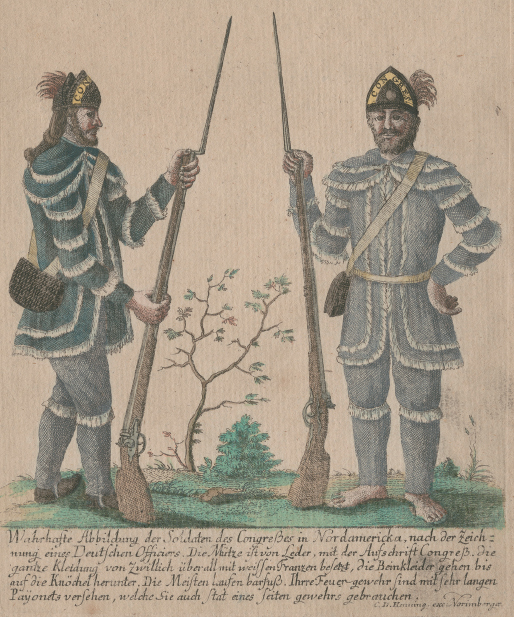What initial challenges did the opposing armies face?
Printed Page 180

Figure false: Backcountry Riflemen
Figure false: A German officer with the British army drew this sketch of two American riflemen, dressed in rustic hunting shirts and leggings. One wears moccasins; the other is barefoot. Their celebrated ability to hit small targets at great distances and their willingness to snipe from behind trees and aim particularly at officers made them a terror to the British. Ten companies of riflemen were recruited in 1775 from western Pennsylvania and Virginia. General Washington worried that they were too undisciplined to make good soldiers, but others suggested that the trademark hunting shirt should become the Continental army uniform for all soldiers, just for the fear it provoked in the enemy. Anne S. K. Brown Military College, Brown University Library.
BOTH SIDES APPROACHED the war for America with uneasiness. The Americans, with inexperienced militias, were opposing the mightiest military power in the world. Also, their country was not unified; many people remained loyal to Britain. The British faced serious obstacles as well. Their disdain for the fighting abilities of the Americans required reassessment in light of the Bunker Hill battle. The logistics of supplying an army with food across three thousand miles of water were daunting. And since the British goal was to regain allegiance, not to destroy and conquer, the army was often constrained in its actions.
CHRONOLOGY
1775
- – Battle of Quebec.
1776
- – Battle of Long Island.
- – Washington captures German troops along the Delaware River.